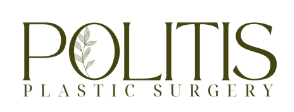WHAT it is:
A Breast Fat Transfer uses liposuction to take fat from other parts of your body and inject it into your breasts. This is an option for women who are looking for a smaller, natural and more subtle increase in breast size.
HOW it’s done:
This procedure is done in the OR under general anesthesia. Liposuction is performed to remove fat from the hips, lower back, thighs and/or abdomen. The extracted fat is then purified and injected into the breasts.
WHAT to expect:
You may experience temporary pain, soreness and numbness in the area(s) that have been treated
Maximum discomfort will occur the first few days but may last several weeks.
Expect the bruising to last up to 6 weeks, depending on your surgery.
Swelling and bruising are normal part of the recovery process and will begin to subside one or two weeks after surgery.
It is expected that your clothes will be tight for the first month or two after surgery. Intermittent swelling may persist for several months.
Your size and shape will continue to decrease each week.
Swelling following liposuction recedes rather slowly. It will take some time before the contour finalizes, usually between three and six months.
Pain and aches are normal especially the first week; this will decrease as bruising subsides.
TOO MUCH ACTIVITY IN THE IMMEDIATE POST OPERATIVE PERIOD WILL RESULT IN EXCESSIVE SWELLING AND POSSIBLE BLEEDING.
AWAKE or ASLEEP
Take a nap with general anesthesia
RECOVER, RESULTS & FREQUENCY:
You can expect to recovery 1-2 weeks with results lasting several years.
PRE-OP instructions:
Have all prescriptions filled prior to your surgery. Do not take any Aspirin, Plavix, Ibuprofen, Vitamin E, Fish Oil, Coenzyme Q10 or medications containing these compounds for 14 days before your procedure.
Begin your stool softener on the day prior to surgery to avoid constipation.
If you have implants: You will need to shower twice daily using antibacterial soap for the three days leading up to your procedure and the morning of your surgery for a total of 6 showers.
If you do not have implants: Wash with Hibiclens or antibacterial soap the night before surgery, as directed. Cleanse your belly button area with a Qtip and the antibacterial soap while showering.
Do not shave the surgical site within 2 days of surgery. This includes under arms for breast procedures and the pubic area for abdominal procedures. Hair may be trimmed with an electric clipper.
Avoid using body lotions, deodorants or perfumes on the day of surgery.
Do not wear any jewelry, piercings or contact lenses.
Refrain from vigorous exercise on the day before your surgery.
Have a regular meal on the evening before surgery, and drink plenty of water. Avoid alcoholic beverages on the evening before surgery. Do no eat or drink anything after midnight the night before your surgery.
POST-OP instructions:
You may shower 24-48 hours after your operation, but no soaking in a bathtub. Lukewarm water.
Elevate the body part that was treated if possible.
The incisions where your physician inserted the cannula may be leaky or drain fluids for several days. You may want to put towels underneath you at home to protect your furniture.
Keep incisions clean and inspect daily for signs of infection.
If you have drains, follow the drain care instructions given to you by your physician
May pad incision(s) with dressings for comfort.
Avoid exposing scars to sun for at least 12 months.
Always use a strong sunblock, if sun exposure is unavoidable (SPF 30 or greater).
THE RESULTS are real
Procedure:
Breast Augmentation with Lift
Patient:
40 years old, 5’3″, 147lbs
Procedure:
Breast Augmentation and Circumferential Body Lift
Patient:
57 years old
Procedure:
Breast Implant Exchange and Mastopexy
Patient:
33 years old, 5’3″, 150lbs
Procedure:
Breast Augmentation
Patient:
5’6″, 111lbs

